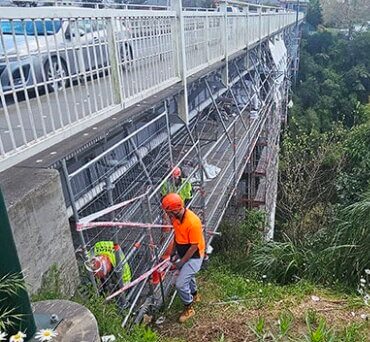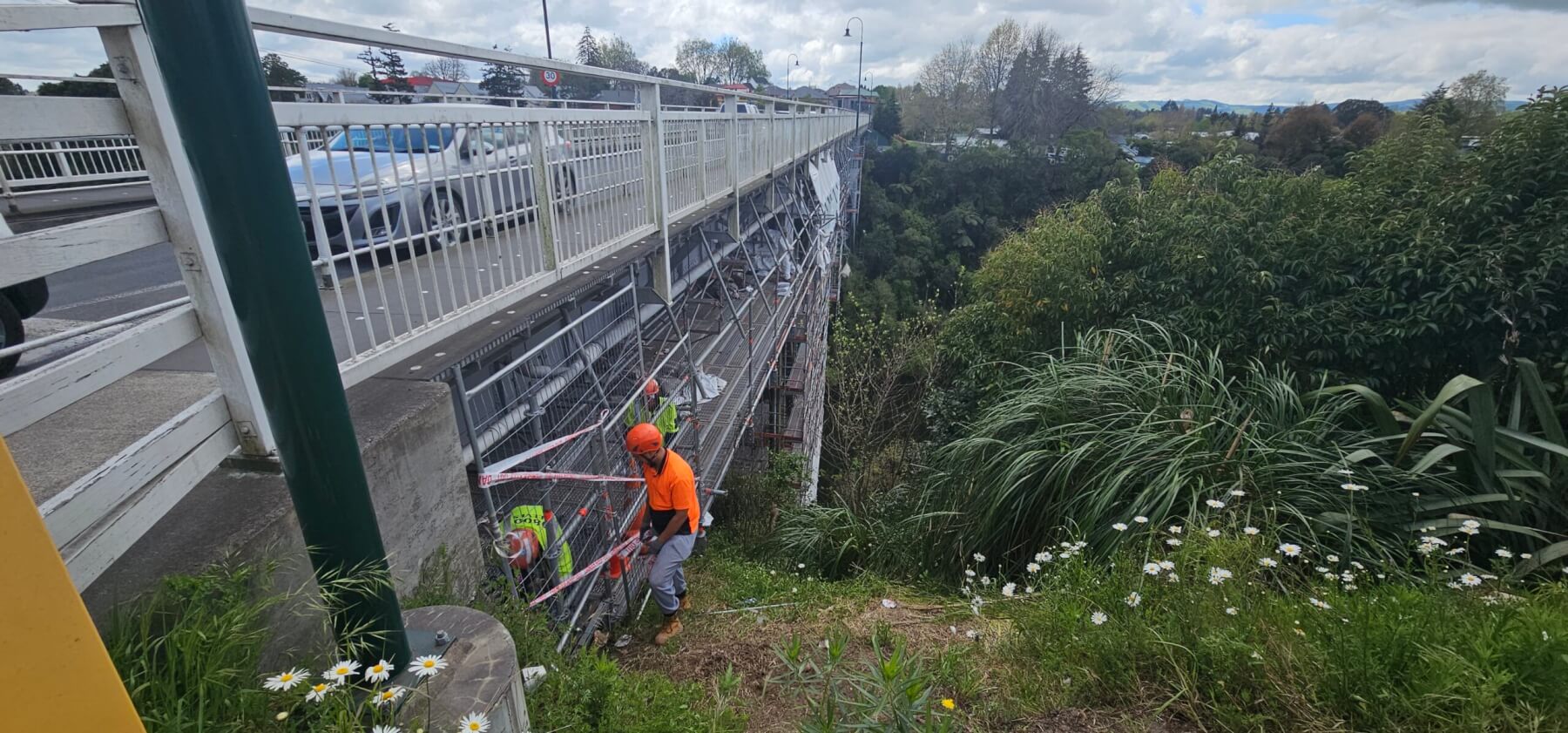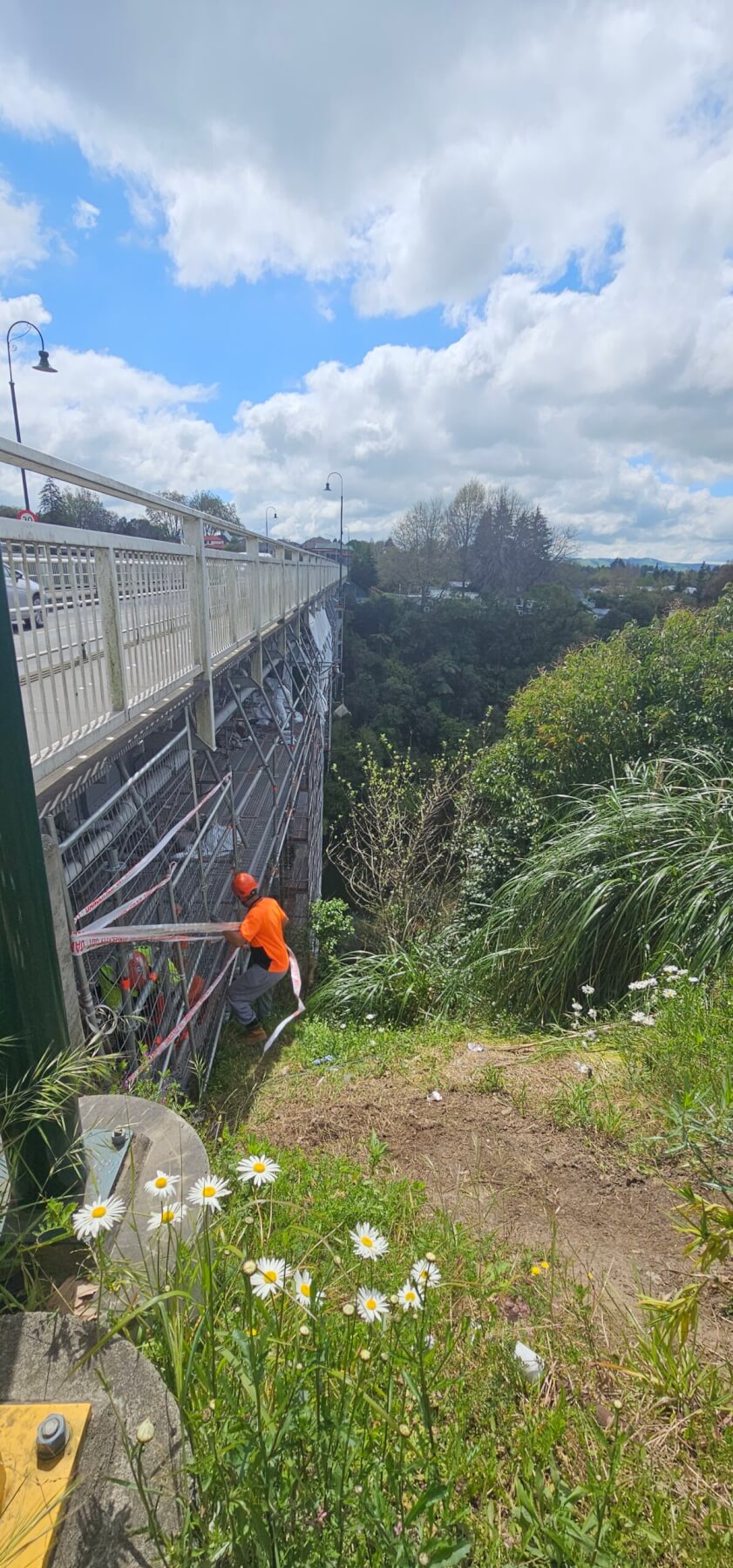
High Level Bridge work

Contractors erect scaffolding at the Leamington side of the historic Victoria Bridge. Photo: Mary Anne Gill.
Painting and maintenance work on the $2.6 million Victoria ‘High Level’ Bridge project is expected to be finished next month, weeks earlier than expected.
Scaffolding reached the southern end of the bridge late last week and crews are now working from the Leamington riverbank toward the centre.
More than 2000 litres of paint is being used on the project with 7000 scaffolding components. The bridge has been scaffolded and repainted in sections starting on the Cambridge town side earlier this year.
Contractors reached the halfway point last month and faced the trickiest part of the bridge works.
Scaffolding was completely suspended from the bridge deck, and they had to be careful of weight and other factors.
Asset Management team leader Paul Strange said on top of the ‘business-as-usual’ work to prepare, sandblast, maintain and repaint the bridge, contractors also carried out some additional concrete work to tidy up the bridge’s foundations on the Cambridge side.
The hinged truss bridge over the Waikato River was prefabricated in 1906 by the American Bridge Company of New York.
The bridge, a Heritage New Zealand Category One structure, was shipped to New Zealand as a 330-tonne kitset and taken by train to Cambridge and Te Awamutu for erection on either side of the Waikato River.
It was the first example of construction using the process of cantilevering the two half arches from each bank.
The use of lattice steel in bridges was relatively common in the latter half of the 19th century. In New Zealand, it was used in railway bridges like the central North Island Hāpuawhenua and Taonui viaducts and the High Level Bridge. It was also used for the Eiffel Tower in Paris.
See: High-level paint job
See: Future proofing the bridge

Contractors erect scaffolding at the Leamington side of the historic Victoria Bridge. Photo: Mary Anne Gill.








